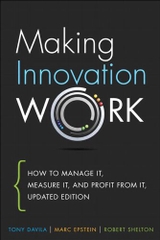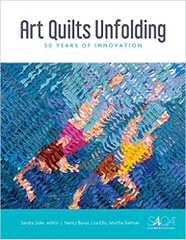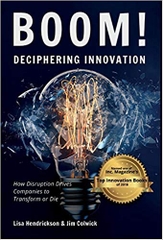-
-
-
Tổng tiền thanh toán:
-
-
Thông tin
-
Tìm sách theo yêu cầu
This book was pulled from shelves when it came to light that the author fabricated many parts.
- Link: http://www.amazon.com/Imagine-Creativity-Works-Jonah-Lehrer/dp/B007QRI1UQ
Product Details
- Hardcover: 279 pages
- Publisher: Houghton Mifflin; 1st edition (2012)
- Language: English
- ISBN-10: 0670064556
- ISBN-13: 978-0670064557
- ASIN: B007QRI1UQ
- Product Dimensions: 8.4 x 5.6 x 1.1 inches
- Shipping Weight: 1 pounds
- Average Customer Review: 3.7 out of 5 stars See all reviews (201 customer reviews)
- Amazon Best Sellers Rank: #27,567 in Books (See Top 100 in Books)
Most Helpful Customer Reviews
714 of 761 people found the following review helpfulBy Tintin on April 8, 2012
I'm intrigued by the subject matter, so having read several positive reviews and finding myself stuck in an airport, I paid list price for Jonah Lehrer's Imagine: How Creativity Works. I'd read Lehrer's How We Decide a couple of years ago, and enjoyed it. My anticipation, boosted by a recent NPR interview and one in The Economist, steadily disassembled as I read the book itself.
Lehrer does not cite the scientific literature well - there is no list of sources in the back and many claims have no clear references at all. He seems a little gullible (or sensational) in regard to some other studies. One showed that red backgrounds increase test-takers' accuracy and attention to detail, while blue backgrounds double their creativity. Were it so easy. And a neurologist can anticipate a puzzle solver's breakthrough 8 seconds in advance. And, he tells us that all the easy problems of the world have been solved, and that cultivation of athletes in the Unites States should be used as a model for cultivating creativity. Here's my favorite, from a footnote: "Urban areas and the human cortex rely on extremely similar structural patterns to maximize the flow of information and traffic through the system." (p183) There was no reference.
But my main criticism is that the book relies almost exclusively on anecdote. He trots out case after case of well-known successes (masking tape, Bob Dylan, 3M, Pixar, etc.), and some unknown ones (a surfer, a bartender) --always in retrospect -- and draws out what he presents as yet another insight into creativity. But many of these are contradictory. For example, does creativity come out of isolation (p 19) or from teamwork (p120); from breaking convention (p 20) or submitting to its constraints (p 23)? Does it help to be in a positive mood (p32) or a depressed one (p76) or an angry state (161) or a relaxed one (50); does caffeine and other stimulants make the epiphanies less likely (33) or more likely (57)? Should stealing others' ideas should be encouraged (247) or discouraged (244)? Does broadening one's set of skills and interests increase creativity (41) or should one concentrate on a single goal (95)? Does relaxation stimulate creativity (p 45) or does difficulty do it better (54)? Does creativity drive toward perfection (p 63) or is it a celebration of errors? (87). Does insight come in a flash (p 17) or is it revealed slowly, after great effort (56)? Must a good poem be "pulled out of us, like a splinter," (p 56) or is it best "vomited." (19)
All of these, apparently.
The book boils down in the end to four vague conclusions which he calls "meta-ideas."
1. Education is necessary
2. Human mixing stimulates creativity
3. Creativity requires willingness to take risks
4. Society must manage the rewards of innovation
For me, the best revelation is on p 159: Brainstorming sessions, in which "there are no bad ideas" do not often result in good ideas, because criticism is essential. This is the key to the growth of knowledge, good government, and much more -- and a theme that is developed thoroughly in David Deutsch's The Beginning of Infinity. That's a much more stimulating and challenging read, which explains creativity (and much else) far better than this one does.
Lehrer does not cite the scientific literature well - there is no list of sources in the back and many claims have no clear references at all. He seems a little gullible (or sensational) in regard to some other studies. One showed that red backgrounds increase test-takers' accuracy and attention to detail, while blue backgrounds double their creativity. Were it so easy. And a neurologist can anticipate a puzzle solver's breakthrough 8 seconds in advance. And, he tells us that all the easy problems of the world have been solved, and that cultivation of athletes in the Unites States should be used as a model for cultivating creativity. Here's my favorite, from a footnote: "Urban areas and the human cortex rely on extremely similar structural patterns to maximize the flow of information and traffic through the system." (p183) There was no reference.
But my main criticism is that the book relies almost exclusively on anecdote. He trots out case after case of well-known successes (masking tape, Bob Dylan, 3M, Pixar, etc.), and some unknown ones (a surfer, a bartender) --always in retrospect -- and draws out what he presents as yet another insight into creativity. But many of these are contradictory. For example, does creativity come out of isolation (p 19) or from teamwork (p120); from breaking convention (p 20) or submitting to its constraints (p 23)? Does it help to be in a positive mood (p32) or a depressed one (p76) or an angry state (161) or a relaxed one (50); does caffeine and other stimulants make the epiphanies less likely (33) or more likely (57)? Should stealing others' ideas should be encouraged (247) or discouraged (244)? Does broadening one's set of skills and interests increase creativity (41) or should one concentrate on a single goal (95)? Does relaxation stimulate creativity (p 45) or does difficulty do it better (54)? Does creativity drive toward perfection (p 63) or is it a celebration of errors? (87). Does insight come in a flash (p 17) or is it revealed slowly, after great effort (56)? Must a good poem be "pulled out of us, like a splinter," (p 56) or is it best "vomited." (19)
All of these, apparently.
The book boils down in the end to four vague conclusions which he calls "meta-ideas."
1. Education is necessary
2. Human mixing stimulates creativity
3. Creativity requires willingness to take risks
4. Society must manage the rewards of innovation
For me, the best revelation is on p 159: Brainstorming sessions, in which "there are no bad ideas" do not often result in good ideas, because criticism is essential. This is the key to the growth of knowledge, good government, and much more -- and a theme that is developed thoroughly in David Deutsch's The Beginning of Infinity. That's a much more stimulating and challenging read, which explains creativity (and much else) far better than this one does.
305 of 339 people found the following review helpfulBy Eric Robert Juggernaut VINE VOICE on January 31, 2012
Vine Customer Review of Free Product ( What's this? )
`Imagine' is a light treatment on the creative process. Anyone familiar with Lehrer's previous work or that of other pop science writers will feel right at home with this book. Lehrer's writing is clear and his use of New Journalism to convey complex scientific ideas through stories makes what could be daunting material very accessible. As a result, the book spurs ideas on a number of levels--cognitive, artistic, and social. Of course, the style also means that the text is rather superficial and leaves the reader begging for a more penetrating study.
This is not due to the book's scope. It is aimed at explaining `how creativity works'--an awesome concept to be sure--but Lehrer does not provide a central thesis to this end. He surveys a number of fascinating aspects of the creative process--insight, novelty, hard work, team work, environment, and others--but seems to shuffle through them without truly grasping their essence. As a result, the various themes feel disparate and disconnected.
One example stands out: In the first chapter, Lehrer talks about the necessary condition one must be in for insight to arise and innovation to occur--a stress-free, relaxing environment. Then, in the third chapter, he talks about how this isn't necessary and how stimulants and other drugs help to narrow focus and thus lend to productivity. Some people are creative because they treat themselves to relaxation; some are creative because they plunge themselves into a stressful, energetic environment. As such, the reader has nothing to hold onto and so does not feel any closer to understanding.
This is reconciled to some degree in the fourth chapter when Lehrer explains how natural conditions such as mania and depression (and manic depressive syndrome) contribute to an organic push/pull of creativity. While it is certainly an interesting thought, the proof isn't quite complete.
More importantly, the theme deserves a more comprehensive foundation on the science of mental processes. While Lehrer does an admirable job of explaining psychological phenomena with physiological causes, the basics are left rather untouched. We know that the right hemisphere emits alpha waves to spark insight and that amphetamines increase the amount of dopamine transferred between neurons, but we don't know what a thought is, how we learn, and what is going on in the brain when we imagine something.
As an avid reader of popular neurology, I can say that most of this is far from being understood. But, if it is not understood, it would still help to acknowledge this fact and simply formulate the theory around that contingency. As it is, Lehrer makes it seem as though this foundation is irrelevant.
It must be said that this book is valuable for simply spurring these questions. It is clear that Lehrer has access to some of the best insight in popular science today. Read this book for that insight, and then use it to come up with your own theories on the creative process.
This is not due to the book's scope. It is aimed at explaining `how creativity works'--an awesome concept to be sure--but Lehrer does not provide a central thesis to this end. He surveys a number of fascinating aspects of the creative process--insight, novelty, hard work, team work, environment, and others--but seems to shuffle through them without truly grasping their essence. As a result, the various themes feel disparate and disconnected.
One example stands out: In the first chapter, Lehrer talks about the necessary condition one must be in for insight to arise and innovation to occur--a stress-free, relaxing environment. Then, in the third chapter, he talks about how this isn't necessary and how stimulants and other drugs help to narrow focus and thus lend to productivity. Some people are creative because they treat themselves to relaxation; some are creative because they plunge themselves into a stressful, energetic environment. As such, the reader has nothing to hold onto and so does not feel any closer to understanding.
This is reconciled to some degree in the fourth chapter when Lehrer explains how natural conditions such as mania and depression (and manic depressive syndrome) contribute to an organic push/pull of creativity. While it is certainly an interesting thought, the proof isn't quite complete.
More importantly, the theme deserves a more comprehensive foundation on the science of mental processes. While Lehrer does an admirable job of explaining psychological phenomena with physiological causes, the basics are left rather untouched. We know that the right hemisphere emits alpha waves to spark insight and that amphetamines increase the amount of dopamine transferred between neurons, but we don't know what a thought is, how we learn, and what is going on in the brain when we imagine something.
As an avid reader of popular neurology, I can say that most of this is far from being understood. But, if it is not understood, it would still help to acknowledge this fact and simply formulate the theory around that contingency. As it is, Lehrer makes it seem as though this foundation is irrelevant.
It must be said that this book is valuable for simply spurring these questions. It is clear that Lehrer has access to some of the best insight in popular science today. Read this book for that insight, and then use it to come up with your own theories on the creative process.
XEM THÊM TẠI AMAZON.COM
- Thông tin chi tiết
- Mục lục
- Đọc thử
- Đọc thử
- Đánh giá & bình luận của người mua
- Những cuốn sách cùng chủ đề hoặc có liên quan
Tại web chỉ có một phần nhỏ các đầu sách đang có nên nếu cần tìm sách gì các bạn có thể liên hệ trực tiếp với Thư viện qua Mail, Zalo, Fanpage nhé
Đăng ký nhận tin qua email
Hãy đăng ký ngay hôm nay để nhận được những tin tức cập nhật mới nhất về sản phẩm và các chương trình giảm giá, khuyến mại của chúng tôi.












